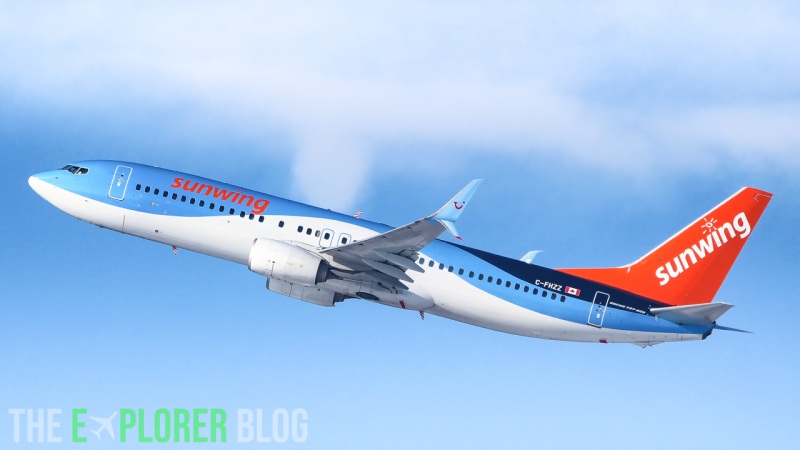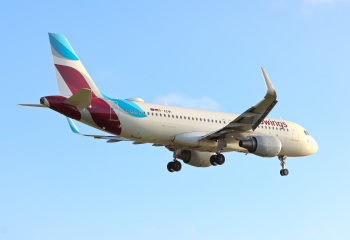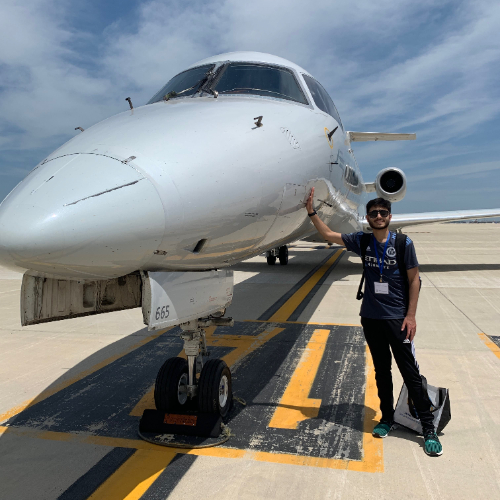Turbulence is a common phenomenon experienced on flights all across the world. However, factors such as weather that greatly influence turbulence are more prevalent in certain areas than others. This begs the question: are certain flights more prone to turbulence than others?
The short answer is yes and many factors lead up to this. As such, today we will examine these factors and which air routes are the world's most turbulent.

How Can Turbulence Vary?
Turbulence can vary based on multiple factors such as wind and weather systems. Turbulence caused by these factors can be more easily predicted and thus avoided.
"Wake turbulence" is caused by aircraft. A departing aircraft often produces a "wake" of bumpy air from its engines as it accelerates and climbs into the air, leaving a lot of wind flowing behind as a result. This is a result of the plane producing lift as it becomes airborne.
To avoid wake turbulence, various regulators such as the FAA have classified aircraft into various weight classes and assigned these classes their own Wake Turbulence Categories (WTCs). With these in place, there are separation protocols implemented between these different aircraft as well.
For example, if an Airbus A380 is departing from a specific runway and another A380 is queuing for departure behind, the recommended separation distance is eight kilometers or roughly five miles. This means that Air Traffic Control must wait until the departing A380 is at least five miles away from the airport before clearing the next A380 for departure.
If smaller planes were waiting behind the A380 such as an A320 or CRJ-900, they would have to wait a little bit longer to receive takeoff clearance. This is because it takes time for the A380's wake to dissipate and if those smaller planes take off any earlier, they would be hit with severe wake turbulence.
Wake turbulence has caused various aviation incidents and accidents in the past such as the case of American Airlines Flight 587. This Airbus A300 was caught in the wake turbulence of a Japan Airlines 747 that had departed before it at JFK Airport.
The pilots of flight 587 had reacted too severely which ultimately led to the aircraft's vertical stabilizer becoming too overstressed causing it to break away and the aircraft to crash.
Therefore, wake turbulence separation procedures have been put in place to prevent such similar instances. However, certain flight routes continuously experience more turbulence than others which we will now examine.
The Most Turbulent Flight Routes
Turbulence caused by weather systems and the like can be avoided by airlines and their dispatch teams. Still, it is not possible to completely avoid turbulent systems altogether.
Some regions of the world, particularly those near large mountain ranges, are more prone to turbulence than others. This explains why the ten most turbulent routes in the world primarily fly by or over mountains.
The most turbulent plane route in the world is Santiago, Chile (SCL) to Santa Cruz, Bolivia (VVI). LATAM Airlines is the only airline currently flying this 1,183-mile (1,905-kilometer) route with an Airbus A320.
SCL-VVI has an average "eddy dissipation rate" (EDR) of 17.57, the highest of any route as of now. The EDR measures the intensity of turbulence in the air around an aircraft.
It should be noted that EDR values range from zero to one. However, to make these values easier to use, they are often multiplied by 100. The higher the EDR value, the higher the levels of turbulence tend to be as the atmosphere dissipates energy quicker.
It should be noted that specific EDR values do not apply to the same types of aircraft. For example, an EDR of 13 would signify "light turbulence" to a small aircraft, while an EDR of 15 would be light turbulence to a medium-class aircraft.
That said, the average 17.57 EDR that the Santiago-Santa Cruz route has signifies that the route usually experiences light to moderate turbulence. Considering the route is flown by an Airbus A320, it is more likely the former.
Here is the full list of the ten most turbulent routes in the world along with their EDR values:
- Santiago, Chile (SCL) - Santa Cruz, Bolivia (VVI) | EDR of 17.57
- Almaty, Kazakhstan (ALA) - Bishkek, Kyrgyzstan (FRU) | EDR of 17.46
- Lanzhou, China (LHW) - Chengdu, China (CTU) | EDR of 16.75
- Nagoya, Japan (NGO) - Sendai, Japan (SDJ) | EDR of 16.58
- Milan-Malpensa, Italy (MXP) - Geneva, Switzerland (GVA) | EDR of 16.40
- Lanzhou, China (LHW) - Xi'an, China (XIY) | EDR of 16.34
- Osaka-Kansai, Japan (KIX) - Sendai, Japan (SDJ) | EDR of 16.31
- Xi'an, China (XIY) - Chengdu, China (CTU) | EDR of 16.25
- Xi'an, China (XIY) - Chongqing, China (CKG) | EDR of 16.04
- Milan-Malpensa, Italy (MXP) - Zurich, Switzerland (ZRH) | EDR of 16.02
With climate change worsening, conditions affecting turbulence are expected to get worse as well. In some areas of the world, severe turbulence has increased by as much as 55% between 1979 to 2020 as a specific study showed.
Another study conducted in 2017 used climate modeling to predict that clear-air turbulence, the most dangerous kind, may be four times as common in 2050 as it is now.
With that said, it cannot be stressed enough that if you are onboard a flight and the seatbelt sign is turned off, continue to keep your seatbelt fastened if seated to be as safe as possible.
Comments (0)
Add Your Comment
SHARE
TAGS
ROUTES TurbulenceMost Turbulent Flights In The WorldSQ321Singapore Airlines Turbulence Turbulence FlightTurbulent FlightAir TurbulenceRECENTLY PUBLISHED
 Learjet Owned By Vince Neil Crashes Into Gulfstream Jet, 1 Fatality Confirmed
On February 10th, around 14:30 local time, a Learjet private jet aircraft crashed into another private jet after landing at Scottsdale Airport (SCF) in Arizona.
NEWS
READ MORE »
Learjet Owned By Vince Neil Crashes Into Gulfstream Jet, 1 Fatality Confirmed
On February 10th, around 14:30 local time, a Learjet private jet aircraft crashed into another private jet after landing at Scottsdale Airport (SCF) in Arizona.
NEWS
READ MORE »
 Seattle Plane Strike 2025: Japan Airlines and Delta Collision Raises Safety Concerns
Seattle-Tacoma International Airport saw a concerning incident on Wednesday morning when a Japan Airlines (JAL) plane clipped a parked Delta Air Lines jet while taxiing. Thankfully, no one was injured, but passengers described the collision as a frightening experience.
NEWS
READ MORE »
Seattle Plane Strike 2025: Japan Airlines and Delta Collision Raises Safety Concerns
Seattle-Tacoma International Airport saw a concerning incident on Wednesday morning when a Japan Airlines (JAL) plane clipped a parked Delta Air Lines jet while taxiing. Thankfully, no one was injured, but passengers described the collision as a frightening experience.
NEWS
READ MORE »
 Ethiopian Airlines Expands Cargo Fleet with New Boeing 777 Freighter
Ethiopian Airlines has expanded its cargo fleet with a brand-new Boeing 777 Freighter, registered as ET-BAB (MSN 68140). The aircraft was delivered directly from Boeing’s factory in Everett, Washington, USA, and landed at Addis Ababa Bole International Airport at 3:41 PM (GMT+3) on Wednesday, January 22, 2025.
NEWS
READ MORE »
Ethiopian Airlines Expands Cargo Fleet with New Boeing 777 Freighter
Ethiopian Airlines has expanded its cargo fleet with a brand-new Boeing 777 Freighter, registered as ET-BAB (MSN 68140). The aircraft was delivered directly from Boeing’s factory in Everett, Washington, USA, and landed at Addis Ababa Bole International Airport at 3:41 PM (GMT+3) on Wednesday, January 22, 2025.
NEWS
READ MORE »





